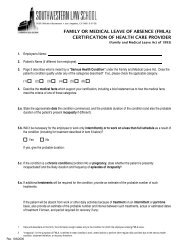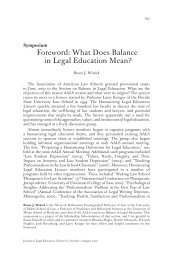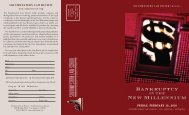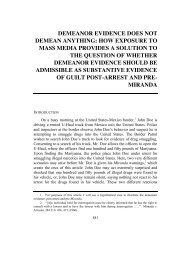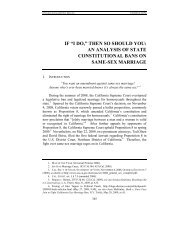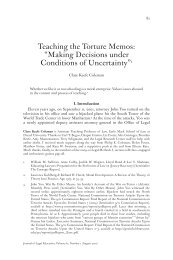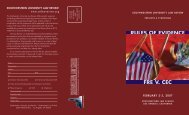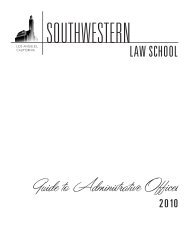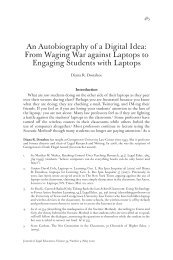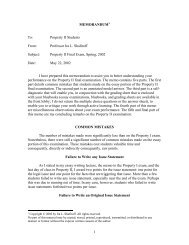What is Art? - Southwestern Law School
What is Art? - Southwestern Law School
What is Art? - Southwestern Law School
- No tags were found...
Create successful ePaper yourself
Turn your PDF publications into a flip-book with our unique Google optimized e-Paper software.
118 J. INT’L MEDIA &ENTERTAINMENT LAW VOL. 4,NO. 2art; illustrations, maps, plans, sketches and three-dimensional worksrelative to geography, topography, architecture or science.” 22 It thenprovides: “It shall, however, be a matter for leg<strong>is</strong>lation in the countriesof the Union to prescribe that works in general or any specified categoriesof works shall not be protected unless they have been fixedin some material form.” 23 Whether national copyright laws of BerneConvention countries have been able to implement Berne in suchways that recogn<strong>is</strong>e innovative v<strong>is</strong>ual art forms developed during thelast 100 years or so, will be explored later; as will difficulties encounteredby courts applying such laws to specific cases.II. H<strong>is</strong>torical Perspectives<strong>Art</strong> <strong>is</strong> no stranger to the courtroom. Western art h<strong>is</strong>tory <strong>is</strong> pepperedwith cases where v<strong>is</strong>ual art has been the central factual and legal <strong>is</strong>suefor the court 24 ; and where judges have been required to consider itsrelevance in a legal context—usually, but not always, reluctantly.Two landmark cases will be considered in pursuit of th<strong>is</strong> article’s thes<strong>is</strong>.1511 Italy: Dürer v. Raimondi 25From around 1501 Dürer 26 made and marketed a series of 19 woodcutprints about the Life of the Virgin. These were of an exceptionallyhigh standard, and attracted the attention of Marcantonio Raimondi(the engraver used by Dürer’s friend and colleague Raphael 27 ) whowas able to engrave, print, and sell multiple copies of them—withoutDürer’s knowledge or consent. Raimondi ignored Dürer’s eventual‘cease and des<strong>is</strong>t’ entreaties (directly and via Raphael), and continuedh<strong>is</strong> evidently profitable merchand<strong>is</strong>ing venture. In 1511 Dürer finallysought a legal remedy from the Senate of the Venetian Republic. 28The facts were not in d<strong>is</strong>pute and, in the absence of any intellectual22. Berne Convention, note 20, supra, art. 2(1).23. Id., art. 2(2).24. For wider contemporary consideration of many more such cases, see LAURIEADAMS, ART ON TRIAL (1976); DANIEL MCCLEAN, THE TRIALS OF ART (2007).25. For a fuller exploration of th<strong>is</strong> case, see PON, L.RAPHAEL, DÜRER &MARCAN-TONIO RAIMONDI: COPYING AND THE ITALIAN RENAISSANCE PRINT (2004).26. Albrecht Dürer (1471–1528) was a German painter, printmaker and engraver:leading art<strong>is</strong>t of the Northern Rena<strong>is</strong>sance. He achieved great success throughout Europe,in large part through h<strong>is</strong> multiple reproduction prints of h<strong>is</strong> own paintings anddrawings.27. Raffaello Sanzio da Urbino (1483–1520) was a progenitor of the Italian HighRena<strong>is</strong>sance.28. From the 7th century to 1797 it was formally entitled the Most Serene Republicof Venice. In 1511 Venice was one of the leading sea-faring and trading nations in thethen developed world.



